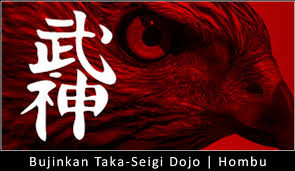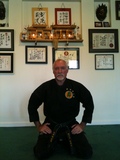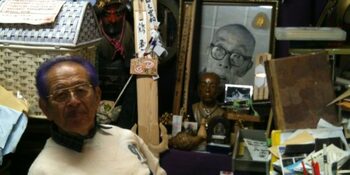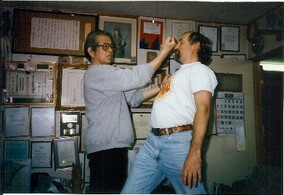
Proper Punching
10.12.18
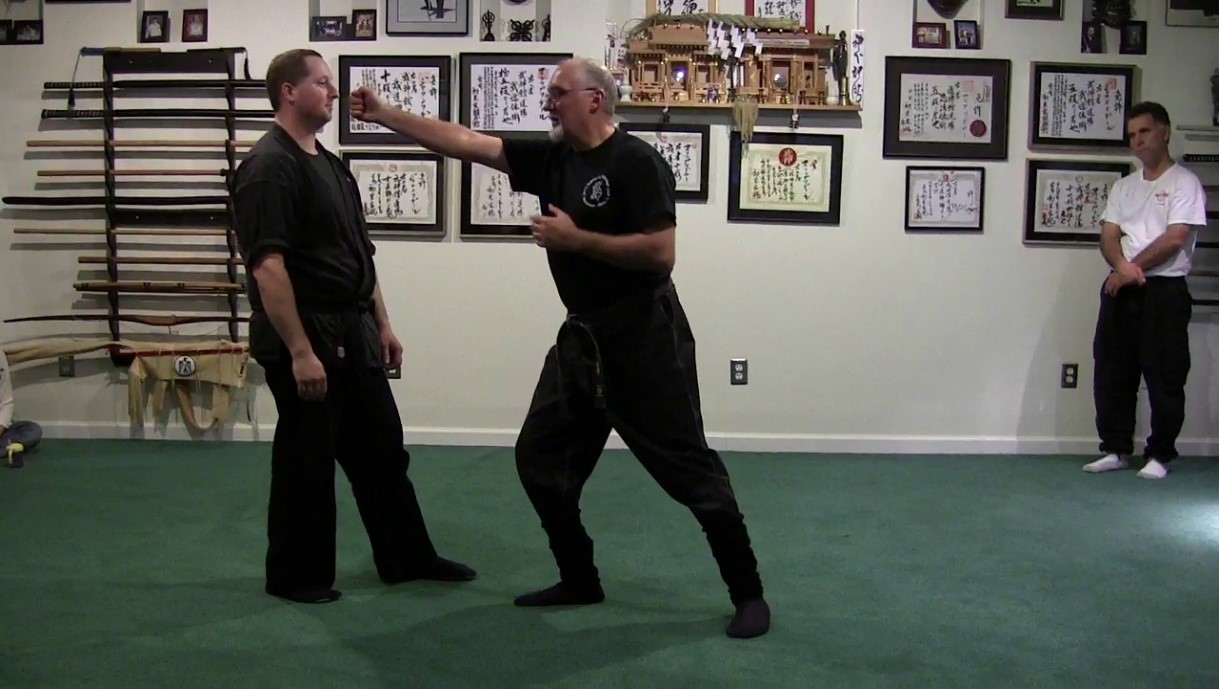
It is said by some that Bujinkan people don’t know how to punch or kick. I believe this is a reaction to the long distance punch and heel stomp kicks we do so often as an uke for the tori to practice a technique. What the casual observer fails to
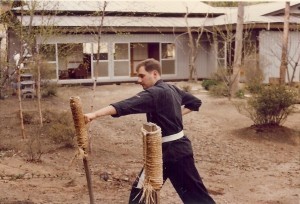
Hitting the Makiwara in 1978
see are the devastating Bujinkan strikes that we do as the tori. Recall the shuto to the neck? Hurts doesn’t it? How about a boshi ken to the kidneys or under the floating ribs? Shikan ken to koe? Sokugyaku keri under the arm or sampo keri to the shins? I could go on and on, but I think you get the point. The Bujinkan is full of devastatingly powerful strikes, grabs and throws.
We just cant practice them full out with a partner without seriously injuring or killing the uke. Couple that with the fact that most Bujinkan dojo are non-commercial, in a community center or in a park, or in my case in the basement. We usually don’t have the luxury of heavy bags and focus targets to practice striking full out. This is a normal phenomenon in the Bujinkan. Do you know of any of the Japanese Shihan who have heavy bags in their dojo? I know of only one. However, on one of Soke’s videos (Bujinkan Koppojutsu) you see several of the Japanese Shihan practicing striking on trees and rocks to build strength, power and accuracy.
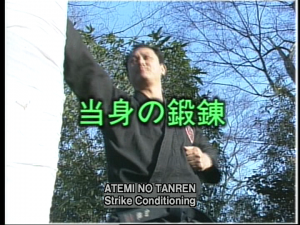
All this leads me to believe we may not put enough effort into practicing correct strikes, at speed and with power. Just doing the long distance air punch can lead to sloppy strikes. Think of those exercise programs you see on TV where punches and kicks are part of an aerobic workout. You would break your hands and feet if you ever connected with anything besides air!
One of the first things I do when I teach a seminar somewhere is observe how people punch. The things that I look for in correct punching are:
- (External) Proper body alignment in the direction of the strike (Feet pointed at opponent, head not tilted sideways, knees not cockeyed, etc. The punch shoots out from the body in a straight line.)
- (Internal) Alignment of bone structure in direction of the strike (All joints open and in alignment with each other. Elbow not turned out to the side, wrist not cocked, shoulder in natural extension, etc. The punch shoots out from the body in a straight line.)
- (External) Balanced and properly committed to the attack (Leading knee not overextended beyond the toes of the lead leg. The student is in balance throughout the motion. The punch shoots out from the body in a straight line with no interruptions along the way.)
- (Internal) The breath is normal. Not holding the breath during the punch. (Breath in or out during the punch, it doesn’t matter, just don’t hold the breath. The punch shoots out from the body in a straight line with no interruptions along the way.)
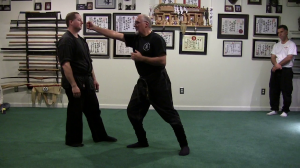
Body alignment (external), bone alignment (internal), balance and commitment (external) and good breath (internal) are fundamental to good striking. Consider these 4 things when practicing your striking.
Members of takaseigi.com can see my latest video that demonstrates proper punching technique.
Questions, comments, & feedback welcome, just write in below!
Phillip Legare
BTSD Hombu, Maryland
“Strength Through Proper Training”
